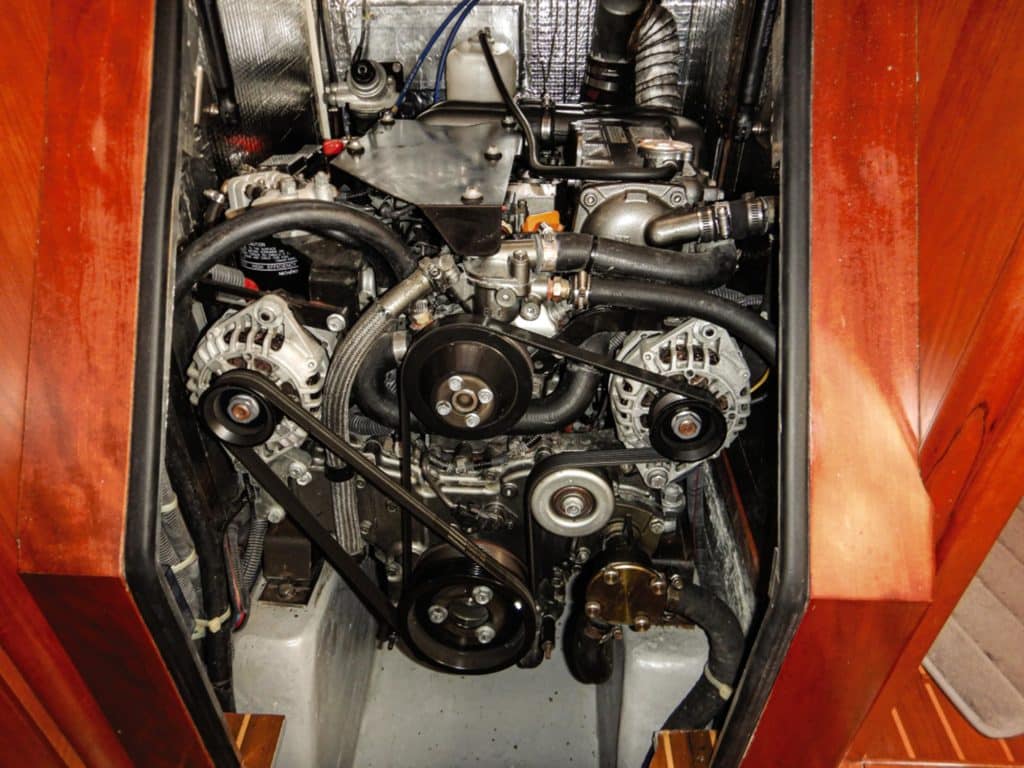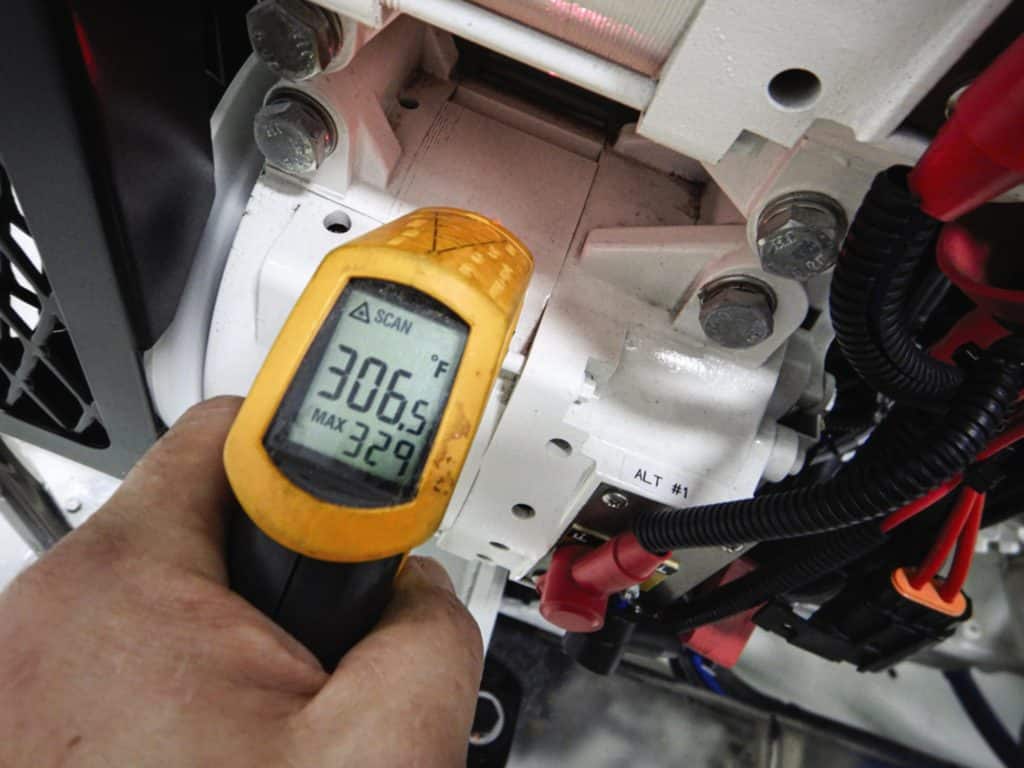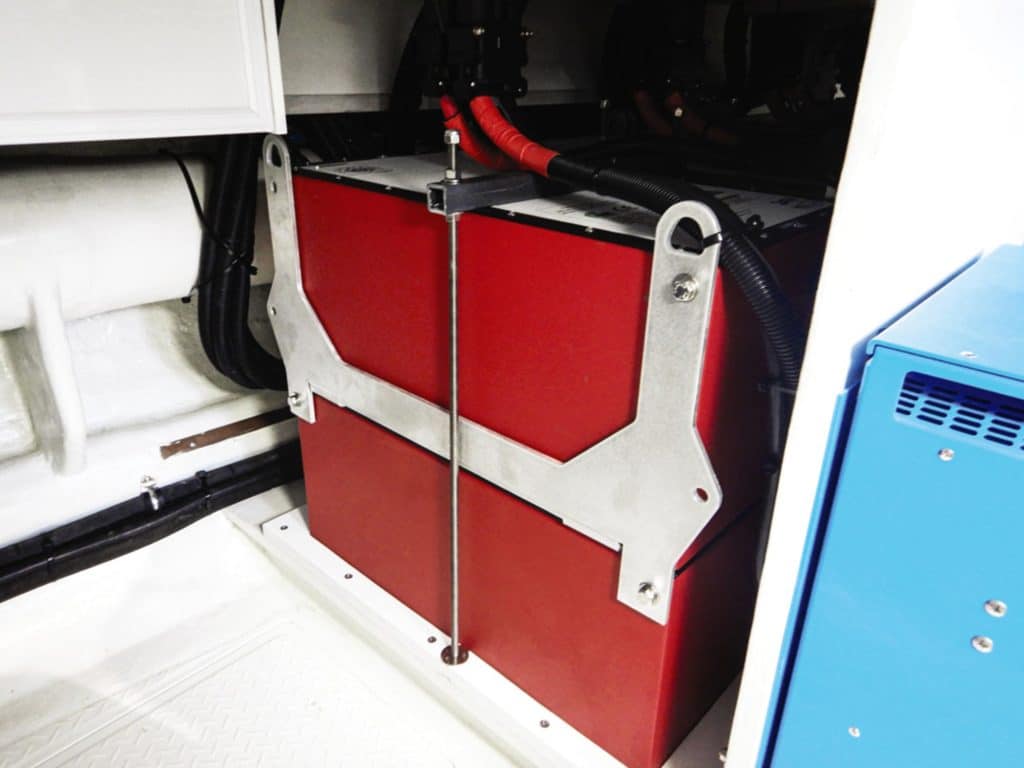
For most sailing vessels, keeping batteries charged is among the most pressing of cruising challenges.
In the majority of cases, the primary charge source is a standard, engine-manufacturer-supplied alternator, which is controlled by an integral, and thus unsophisticated, regulator. While this setup may work, when it comes to charging large, deep-cycle house banks, it’s far from ideal.
Most deep-cycle battery manufacturers—and especially those of the sealed-valve, regulated lead-acid variety (such as absorbent glass mat and gel batteries)—recommend “smart” three-stage charging for maximum longevity and warranty coverage. If your bank is made up of lithium-ion batteries, then sophisticated, intelligent charge control is not only recommended, but it is also mandatory for efficiency and safety.
Virtually every vessel with a house battery bank will benefit from an alternator/regulator upgrade. Standard alternator/regulators will chronically overcharge or undercharge deep-cycle batteries, thereby shortening their lives and reducing performance. It’s easy to make the argument that an upgrade of these components will pay for itself.

For conventional lead-acid batteries, a proprietary high-output alternator (one that is designed to work at near-maximum capacity for an extended period) along with an external smart regulator will, with a few caveats, provide the battery bank with the most desirable charging profile under the circumstances. This means that for the time the engine is run, the maximum amount of charge can be produced. Other than when motoring for extended periods, in most cases, the duration an auxiliary engine can be run for charging purposes is less than ideal, making it more important than ever to wring every last amp-hour out of the alternator.
In addition to utilizing a high-output alternator and smart regulator, look for two types of temperature compensation. A probe wired to the regulator and affixed to the battery will report the battery’s temperature to the regulator, allowing for compensation in the alternator output. The cooler the battery, the greater the rate at which it can accept charge; conversely, warm batteries must be charged more slowly. Plus, the regulator should also receive information from the alternator’s case. If it gets too hot, the output can be reduced to prevent heat damage.
The ideal alternator/regulator should have the following features: multistep charging, temperature compensation, self-diagnostic lights or display, programmability for different battery types (including flooded, standard and thin-plate pure lead, AGM, gel, carbon foam and lithium-ion), a user interface (dip switches or, preferably, a laptop), and N- or P-type field control for safety. Alternators whose field is regulated by controlling the negative side of the input—the N-type—run the risk of the alternator inadvertently producing unneeded maximum output, which can lead to costly and potentially dangerous battery damage. Alternators whose output is controlled by throttling the positive side of the field—the P-type—risk a short that can blow a fuse and cease output, which, while undesirable, isn’t harmful. My preference is for N-type alternators, as long as the regulator can accommodate this protocol.

Review the installation and programming instructions before investing in a new alternator/regulator. While you can leave the installation to a professional, programming guidelines should be clear, concise and simple enough for the average sailor to follow. You should not have to be a marine electrician to program and understand the regulator’s functions.
Finally, when switching to a high-output alternator, the existing belt arrangement (a single V-belt, in many cases) will likely be inadequate. For alternators 100 amps and above, at 12 volts, a dual or serpentine belt will almost certainly be necessary. Both are available for select engines as aftermarket kits, or they can be custom-made. Overloading a single belt can lead to slippage, heat generation, and alternator and water-pump bearing failures.
Steve D’Antonio offers services for boat owners and buyers through Steve D’Antonio Marine.








